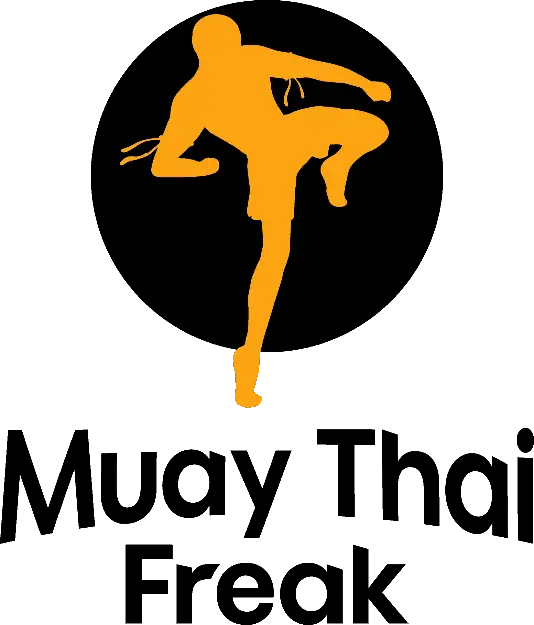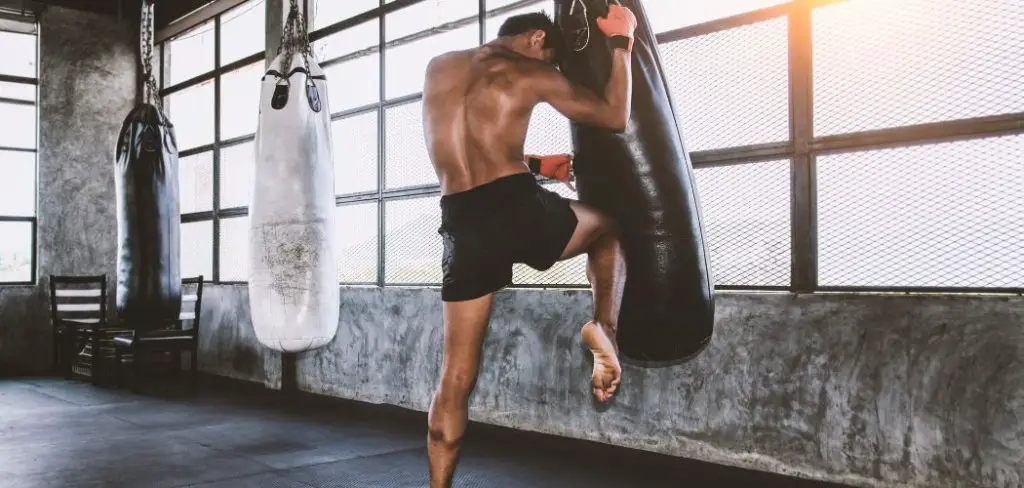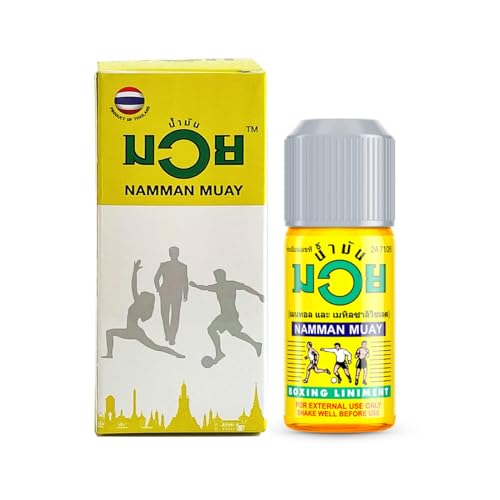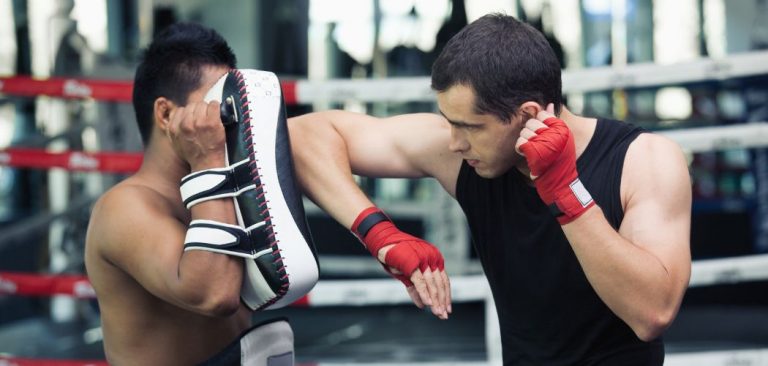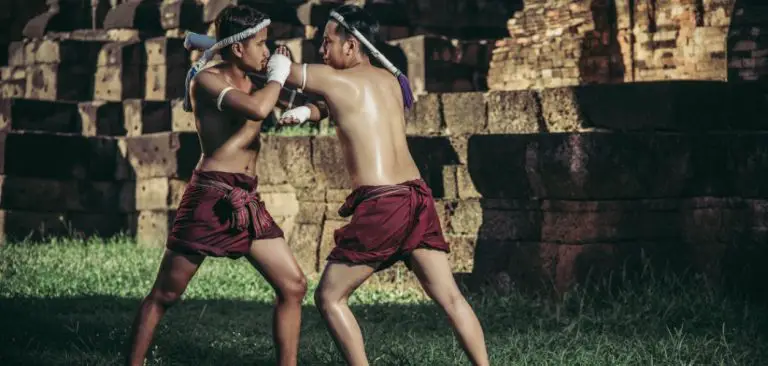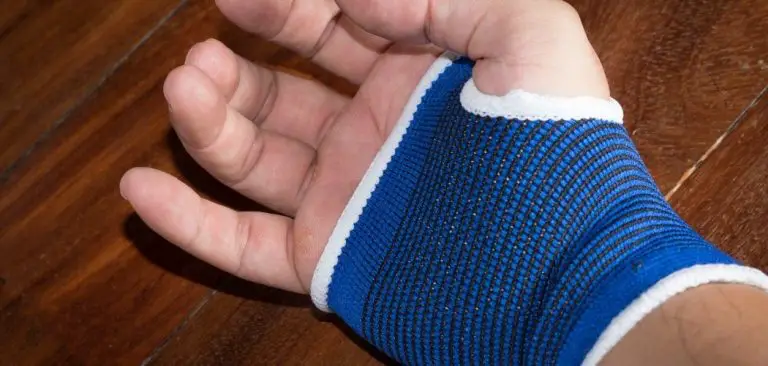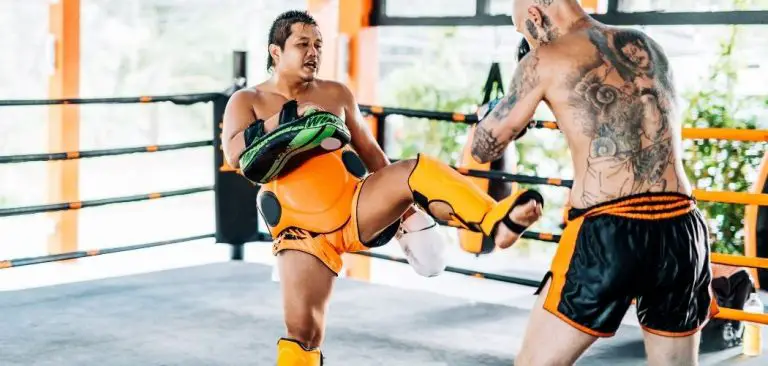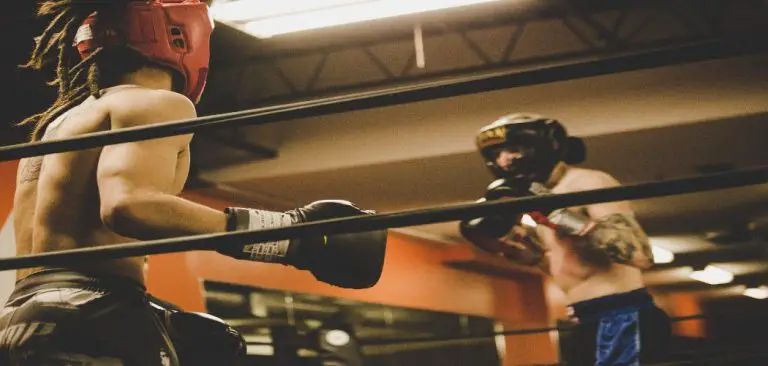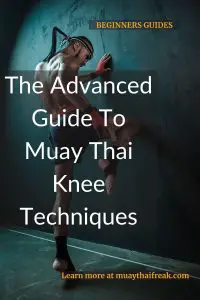
Knees are the ultimate weapon in Muay Thai. The most vicious knockouts happen when a powerful knee hits the chin or the nose. Fractures are so often, that it has the same effect as a baseball bat on your face.
I know that the knee is the most powerful weapon in Thai boxing, but have you ever wondered which are the most lethal Muay Thai knee techniques? Can you use them in mixed martial arts? How often can you turn the lights out on your opponent and how?
Well, there’s no need to wonder anymore, because I got you covered. Let’s deep dive into the world of the most lethal Thai boxing weapons.
Table of Contents
Muay Thai Knee Techniques – Variations And Classification
You can apply so many knee strikes in a Muay Thai fight. Clinch is the best for delivering all kinds of those strikes, but you can land them from mid and long-range too.
Thai boxing’s trademark is a powerful knee for a reason. It is very hard to block it plus it lands from any range, which means it can be lethal from every angle too. I will try to guide you through the world of Muay Thai knee techniques, but before we start, I’ve got three important notes:
- Every knee can be used successfully by a beginner or an experienced fighter. Remember, everybody can land it, you just need the training to master it.
- Only flying knees are considered non-beginner techniques. Clinch is the backbone of Muay Thai, you will learn it in the first few training sessions.
- It is recommended to aim above the waist in the early stages of your career. If you transition to MMA, knee strikes under the belt make sense. Please keep that in mind.
Straight Knee (Khao Trong) + Khao Yao (long variation)
The straight knee is the most often on the list of Muay Thai knee techniques, and it is one of the easiest ways to attack your opponent to the body. It is excellent for mid-range, and if you’d prefer throwing it from long-range, you’ll have to make the Khao Yao variation, where you push your hips forward and slide towards your opponent.
The tutorial below explains the most perfect version of the straight knee. Yet, you might have to adjust it in your sparring session or the competition. To decrease the distance, make a step-drag forward or a 45-degree step forward. It opens the bigger angle and improves the power of the strike.
Flexing your back foot, leaning backward to stay away from a counter, and driving your hips forward to generate a maximum force are “the secrets of masters”, but you’ll get into the spirit of things as time goes by.
In MMA, you can use it to intercept a takedown attempt, especially when your rival targets your rear leg or waist. For example, the battle between Mirko Cro Cop and Kazuyuki Fujita is the perfect example of a straight knee as a top-notch old-school takedown defense.
Diagonal Knees (Khao Chiang)
I will ask you a very simple question. Do you know to throw a Muay Thai roundhouse kick to the body or head? If your answer is yes, I bet you’ll learn to perform a diagonal knee in the split of a second. This technique is not too hard, but the distance might be a problem, as it is a mid-range strike. Look at the tutorial below.
If you’d like to modify the distance, I am telling you – straight knee rules count here, so please read the paragraph above one more time.
When it comes to an MMA fight, a diagonal knee is used to defend an opponent who fishes for a single leg takedown. A straight knee would hit his shoulder, and that’s not gonna stop him. But a good knee to the chin, mouth, or nose leads to a fight-ending strike and a knockout victory!
Please take a look at the breakdown of the fight between Makwan Amirkhani and Lerone Murphy. Yes, there’s a lot of feinting, but Makwan initially attacked the leading leg, which led to a powerful diagonal knee knockout blow!
Horizontal Knees (Khao Tat)
This is a bit harder technique, and you’ll need some hip flexibility to perform it. Kick off with training on the heavy bag, then try it out on your opponent. You’ll rarely score a knockout blow with this strike, but a knockdown might force your opponent to retreat, which might give you an edge on judges’ scorecards. Please take a look at the detailed tutorial below.
This is an excellent clinch strike, but you’ll need some experience and skill before you start hitting the opponent’s ribs or stomach. Work on it regularly and you might be surprised with the results.
Curved Knees (Khao Khong)
This is a pure clinch technique that demands an opening angle and a specific set of movements. Unfortunately, it is pointless to train it without a partner. A heavy bag can serve the purpose but it’s not the best solution. To be able to land, you have to outsmart your opponent and anticipate his moves.
When you position yourself laterally towards your enemy, push your knee towards him and deliver a powerful blow to his stomach. Of course, you need to control the clinch via Muay Thai plum in the first place, but my Muay Thai clinch tutorial covered it all. Look at the video below, it might get clearer for you.
Spear Knees
Spear knees are some of the most devastating strikes you can land on your opponent in the clinch. The detailed tutorial below shows every single aspect of it. Unlike a diagonal or straight knee, you must push your knee to maximize damage.
This is important because it will generate more power, which will weaken your opponent in the later stages of the fight, especially when the bout goes into later rounds. I am kindly advising you to feint before this strike, the skillful opponent could easily counter you with a step-drag backward and a leg kick.
Please take a look at the tutorial below and enjoy breaking some ribs and demolishing spleens and livers.
Small Knees (Khao Noi)
Small knees can only be used in the clinch. These are the short knee strikes to the inner area of the opponent’s thigh. You cannot end the fight, but there is a possibility of collecting more points and leaving a better impression on judges’ scorecards.
Rabbit Knees
Rabbit knees are pretty much similar to small knees, but you can use them in an MMA fight when you control the opponent’s side or back next to the fence. You can lean more towards your opponent, so it gives you an additional ability to create more damage to the enemy’s thighs.
Your knee can swing more, and there is a chance of finding a sweet spot and paralyzing your foe via a top-notch attack to the ischial nerve or the inner side of the thigh. It depends on the angle.
Flying Knees (Khao Loi)
You will hear diehard fans of Thai boxing calling them “the art of Muay Thai”. Many top-notch flying strikes can effectively teleport the opponent to a different dimension. Overall, you can make a difference between three types of flying knees:
- No-leg-change flying knees;
- Flying scissor knees;
- Counter-flying knees.
Note: You can modify many strikes to flying knees. For example, there are variations like flying diagonal knee, flying straight knee, etc. Of course, I will not cover each variation. I will focus on practical examples to show you the real power of ancient Siamese martial art.
No-Leg-Change Flying Knees
No-leg-change flying knees are the most often group in the market. You don’t switch your legs in the air or retreat while performing this technique. If you jump off your right leg, your left leg hits the opponent and vice versa.
I know you might say it has nothing to do with Thai techniques, but let me ask you a question. Did you watch the violent slugfest between Gilbert Burns and Gunnar Nelson at UFC Fight Night: Hermansson vs Cannonier? Have you seen how Gilbert rocked and nearly stopped Nelson? If your answer is “no”, I kindly advise you to watch that fight carefully.
Or I have an even better example. Here is the fight between Cory Sandhagen and Frankie Edgar. Edgar was fishing for a takedown, but Sandhagen’s miraculous knee ended Edgar’s bantamweight title dream (the first knockout in the video below).
Flying Scissor Knees
The only difference is the fact that you’re switching the leg in the air. For example, when you jump off your left leg, you have to hit the opponent with your left knee.
These strikes are long-range and extremely brutal. Many fighters were knocked out cold by these techniques. You’ll need some time to master them, but you’ll be a real threat when you do. Especially if you’re taller than the rest of the division.
Here is an example from the bout between Kazuyuki Miyata and Norifumi Yamamoto (RIP). Fighters agreed not to touch gloves, and Norifumi attacked with a devastating flying scissor knee that put Miyata to sleep instantly.
Counter Flying Knees
You are retreating while performing those strikes, it is mostly a way to defend against a takedown or an opponent who constantly ducks under in an MMA fight. Are they dangerous? Hell yeah, Michael “Venom” Page broke Cyborg Santos’ skull with this kind of counter! I think these are the most dangerous Muay Thai strikes in the world!
Spinning Knees
Yes, these Muay Thai knee techniques exist, this is not a joke! I am telling you, technically you can land some of them! Are they risky? Yes. Are you going to get punished if you miss? Probably yes!
But spinning knees exist as a part of Muay Thai. And yeah, you can create serious damage when it lands on the button. They mostly target the opponent’s mid-section. For example, imagine the opponent spinning for a tornado kick and hitting the stomach with his knee. It’s possible, isn’t it?
Let me ask you a question – are you a gamer? I play Tekken from time to time, and I think Bruce Irvin and Fahkumram are the most perfect creations of the Muay Thai warriors the world has ever seen. Check their striking arsenals, you will see some heavy spinning attacks!
Modified Knees
For me, this is the most modern part of Muay Thai knee techniques. Have you ever seen a fighter feinting with a hand, then delivering a violent flying or a diagonal knee to the opponent’s head while he’s ducking under and trying to evade the fake strike? Well, I did!
I like to call this area of Muay Thai “hidden knees”. Your goal is to mask the technique and make sure the opponent believes you’re going to attack him with a different limb or strike. But there are a few rules you should follow when doing this:
- Please finish the strike with the different sides of your body to maximize the power. For example, feint with a right jab to land left knee flush.
- Try to hide your intention and change feints regularly. Do one feint all the time and the opponent will read your intentions.
- Feint at least twice before you hit. Good counter-experts can catch you easily.
Conclusion
I hope you enjoyed my Muay Thai knee techniques post. I tried to discuss every single knee strike, from the ones you learn in the first training session to the ones that make a difference between an intermediate fighter and a star.
The powerful knee is a trademark of Muay Thai for a reason – it works from the clinch, mid-range, and long-range, plus you can land it on any area of the opponent’s body. A good Thai striker is a master of at least five knee strikes.
Last Updated on July 27, 2022 by Deni
